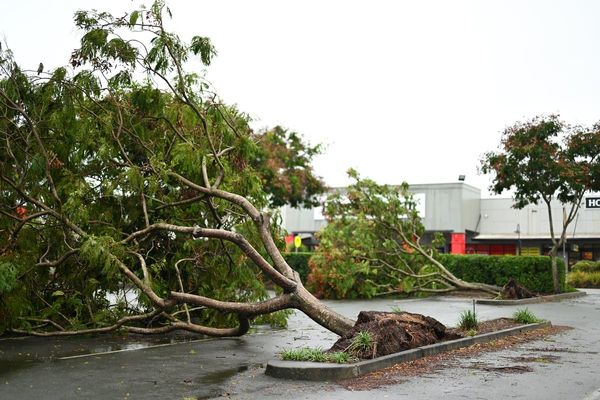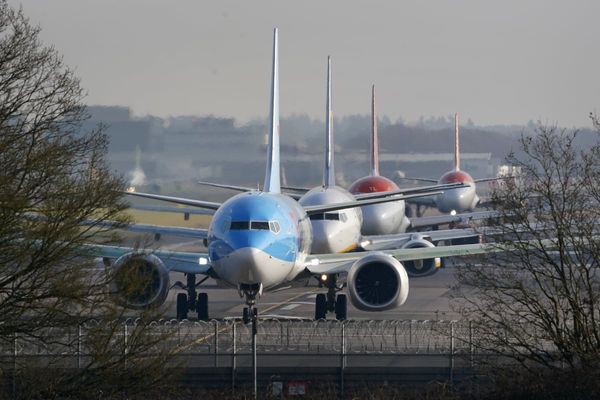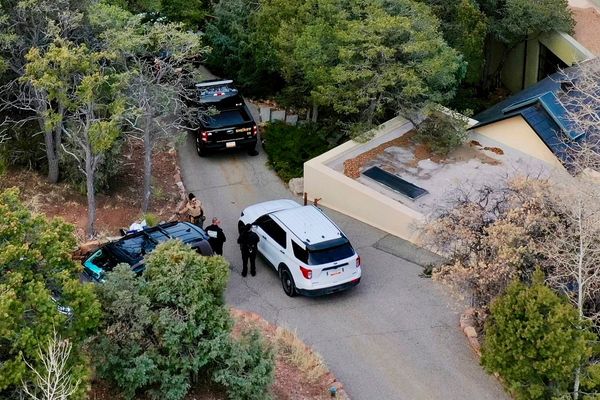Two new Smithsonian museums meant to honor the contributions of women and Latinos have been tied up for years as fights over their location and content have raged.
Despite these snags and the Trump administration’s vows to snuff out many diversity initiatives, a bipartisan group of lawmakers is projecting optimism this Congress and rallying support around a pair of bills that would allow the museums to be built on the National Mall.
“I think they’re both moving along. They’re both garnering sponsors and we will continue to advocate for both,” said Rep. Nicole Malliotakis, R-N.Y., who is leading both bills. “It’s a shame that over the last four years they’ve kind of stalled … but we’re hoping to get them back on track.”
Both museums were created by Congress as part of an appropriations package signed by President Donald Trump in December 2020, and would be funded half by private donations and half via public funds.
But debate about where the museums should be placed has slowed the process. And in 2023, Republican lawmakers took issue with a preview exhibition they said was biased and too soft on left-leaning regimes, like Fidel Castro’s in Cuba.
Proponents now say those issues should be settled. But there are more hurdles to clear and lingering questions about political will. The museums will each eventually require a substantial investment from Congress ―a big ask at a time when Trump and congressional Republicans say they want to cut federal spending.
The museums also risk getting caught up in the administration’s fervor against diversity, equity and inclusion.
Messaging from Trump on the museums has been mixed at best.
Last week, Trump signaled support for the women’s museum one day, and the next issued an executive order taking shots at the content across Smithsonian museums.
The executive order directs Vice President JD Vance, who sits on the Smithsonian’s board, to work with the Office of Management and Budget and Congress to block future spending “on exhibits or programs that degrade shared American values, divide Americans based on race, or promote programs or ideologies inconsistent with Federal law and policy.” It specifically takes aim at any plans at the women’s museum to celebrate “the exploits of male athletes participating in women’s sports.”
And the Washington Post reported Wednesday that the director of the National Museum of African American History and Culture is on personal leave for an “undetermined period.”
“It certainly is an aggressive and intolerant way to look at history and our legacy as a country,” said Rep. Adriano Espaillat, chair of the Congressional Hispanic Caucus and a co-sponsor of both bills. Despite Trump’s order, the New York Democrat said he still felt confident about the outlook for the new museums.
Malliotakis, for her part, said Trump’s recent moves will only help to lock in support.
“What the president is saying is that he doesn’t want these museums to be woke or to be museums of historical revision,” Malliotakis said. “He wants them to be museums that will be for everyone. I think that it ensures we’re going to get the support. He’s just putting a line in the sand saying that he doesn’t want our museums to be woke. And I agree with him.”
Republican buy-in
Previous skeptics say they have moved past the outcry over the Latino preview exhibit, displayed at the National Museum of American History. The backlash was strong enough that in 2023, Republicans threatened to strip congressional funding.
“We felt that the temporary exhibit was woke and was leaning far-left and not truly telling the stories of Latinos throughout the country,” said Rep. Monica De La Cruz, R-Texas, who represents the Congressional Hispanic Conference on the Latino museum board.
Malliotakis said she is confident “that what has happened in the past won’t happen again,” thanks to legislative guardrails worked into the bill text, including language “ensuring diversity of political viewpoints and authentic experiences” and a requirement that the Smithsonian report back to Congress on its efforts within 120 days of the bill’s passage.
“We had to get the buy-in from the certain Republicans who were objecting to that exhibit and wanted to have a diversity of political viewpoints … all of that took some time,” said California Democratic Rep. Judy Chu, a supporter of both museums.
Some hoped a bill on both museums introduced by Malliotakis last August would be included in the stopgap spending measure Congress passed at the end of the year. But the museum legislation got pulled out as the package got pared down.
“We tried to push both of them last year, but it was a very short runway,” Malliotakis said.
In the 119th Congress, she decided to take a different tack and lead two separate bills, one for the women’s museum and one for the Latino museum. Each would permit the development of the museum in the “reserve” of the National Mall, a “no-build zone” encompassing the Tidal Basin, the White House, the Lincoln Memorial, the Washington Monument and a large strip of land east of the monuments stretching to the Capitol.
Passage of one or both bills would be a win for those who argue such history deserves prominent placement.
“It is so important for these museums to be right at the center of the Smithsonian complex,” Chu said. “The reserve is where the visitors go. It’s a place that commands respect.”
The Smithsonian’s board has singled out two such “optimal” sites for the new museums but is waiting on Congress to act and override the “no-build” ban. One location is just across the mall from another relative newcomer, the National Museum of African American History and Culture, while the other is near the Tidal Basin.
“The ideal location for these museums.. is on the actual mall here in Washington, where millions of visitors come each and every year to learn about our history and what makes America great,” said Sen. Alex Padilla, D-Calif., who is leading a bipartisan Senate version of the Latino museum bill. That bill, as well as a Senate bill to authorize the placement of the women’s museum on the mall, will likely be introduced in the work period ending April 11, according to a Senate Democratic aide.
Parallel tracks?
Now that the bills to advance the museums are separate, some fear that one could be left behind, whether for reasons political or pragmatic.
Currently, the House bill authorizing the placement of the women’s museum has 102 co-sponsors, including 50 Democrats and 52 Republicans. The bill for the Latino museum placement has 58, with 24 Democrats and 34 Republicans signed on.
“I think that together is stronger, but nevertheless, I feel that even on their own, they’re strong enough to go through the full process and be able to pass,” said Espaillat.
Malliotakis and De La Cruz both said the women’s museum has more momentum at the moment, particularly fresh off Women’s History Month.
“Right now our No. 1 priority is the women’s museum,” De La Cruz said.
That doesn’t mean the Latino museum isn’t a priority, they insist. But it could face stronger headwinds as the Trump administration spreads mostly negative narratives about immigration from Latin America.
In February, Alfonso Aguilar of the American Principles Project and Mike Gonzalez of The Heritage Foundation wrote an op-ed calling on Congress to halt funding and hold off on authorizing a mall site for the museum, which they said “has become a tool of the cultural Left to push its dystopian narrative about the experiences of Hispanics in the United States.”
Whether any of that opposition still exists among congressional Republicans is unclear. Speaker Mike Johnson, through a spokesperson, did not respond to a request for comment. The White House also did not respond to a request for comment, though supporters pointed to Trump’s role in kicking off the projects with his signature in 2020.
“I think President Trump would be interested in seeing both being built because he authorized them,” Malliotakis said.
The post Questions linger on future of Smithsonian museums on women, Latinos appeared first on Roll Call.







